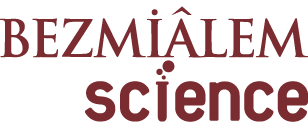ÖZET
Amaç:
Genç yetişkinlerde otur-kalk test (OKT) performansını ve fiziksel aktivite seviyesini belirleyerek OKT performansının cinsiyetle ve fiziksel aktivite seviyesi ile ilişkisini belirlemektir.
Yöntemler:
Altmış gönüllü rastgele sırayla 5 tekrarlı OKT, 10 sn OKT, 30 sn OKT ve 60 sn OKT’lerini gerçekleştirdi. Test sonu yorgunluk seviyeleri Borg Yorgunluk skalasıyla değerlendirildi. Katılımcıların fiziksel aktivite seviyeleri ve haftalık enerji tüketimi değerleri Uluslararası Fiziksel Aktivite Anketi kullanılarak belirlendi.
Bulgular:
Kadın ve erkek katılımcılar arasında 5 tekrarlı OKT, 10 sn OKT, 30 sn OKT ve 60 sn OKT skorlarında istatistiksel olarak anlamlı farklılık tespit edildi (sırasıyla, p=0,004; p=0,002; p=0,000; p=0,000). OKT sonundaki yorgunluk seviyelerinde ise anlamlı bir fark bulunmadı (sırasıyla, p=0,636; p=0,295; p=0,888; p=0,150). Tüm katılımcıların haftalık enerji tüketimi değerleri 5 tekrarlı OKT skoru dışında tüm testlerle pozitif olarak ilişkili bulundu (sırasıyla, r=-0,458, p=0,000; r=0,427, p=0,001; r=0,606, p=0,000; r=0,545, p=0,000). Orta ve yüksek fiziksel aktivite seviyesine sahip katılımcıların OKT skorları karşılaştırıldığında istatistiksel olarak anlamlı farklar saptandı (sırasıyla, p=0,016; p=0,007; p=0,000; p=0,000).
Sonuç:
Bizim çalışmamız genç yetişkinlerde OKT performansının cinsiyetle ve fiziksel aktivite seviye ile ilişkili olduğunu göstermektedir.



